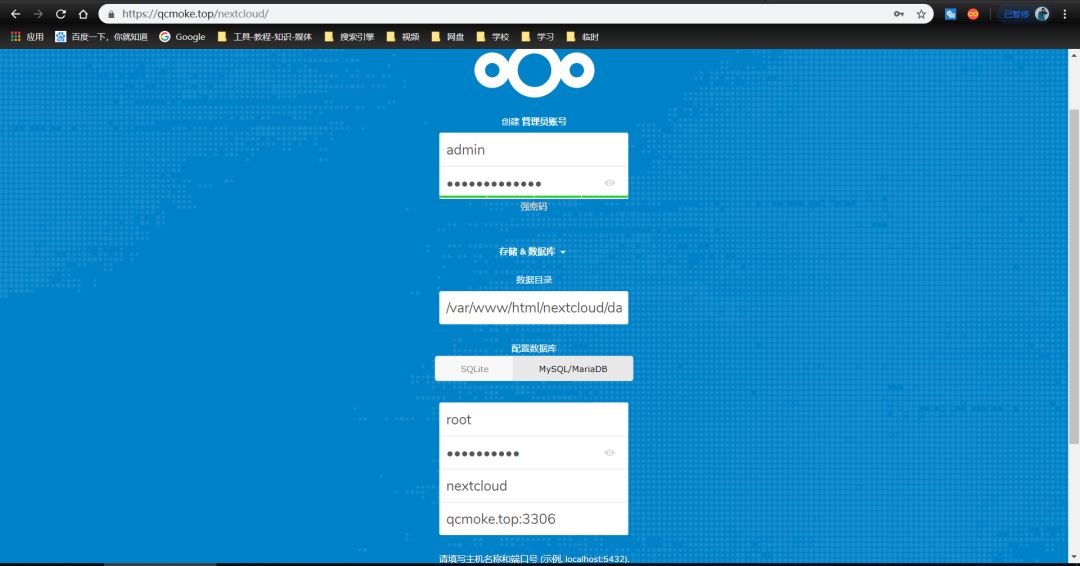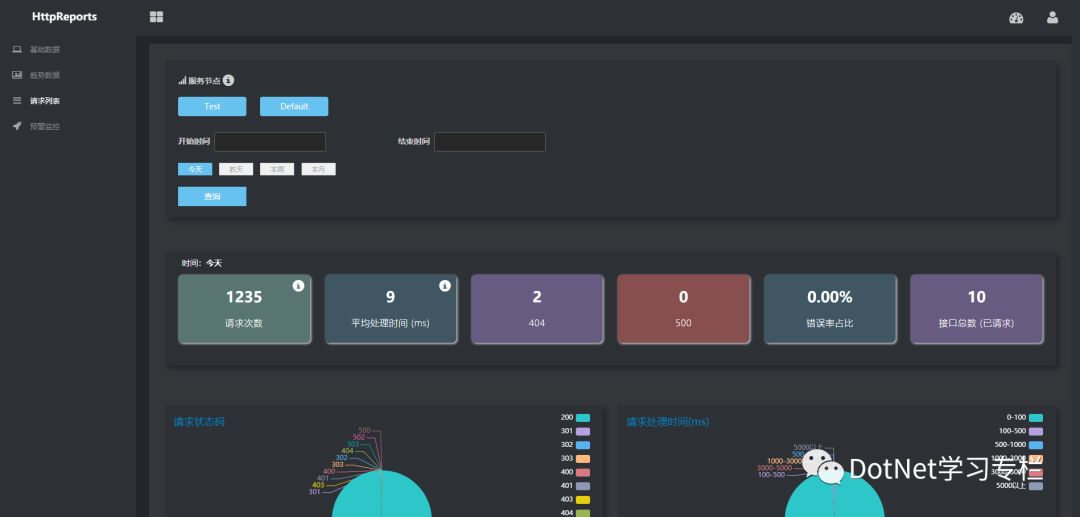简介
Excel 和 Word 操作在开发过程中经常需要使用,这类工作不涉及到核心业务,但又往往不可缺少。以往的开发方式在业务代码中直接引入 NPOI、Aspose 或者其他第三方库,工作繁琐,耗时多,扩展性差——比如基础库由 NPOI 修改为 EPPlus,意味着业务代码需要全部修改。
由于工作需要,我在之前版本的基础上,封装了 OfficeService,目的是最大化节省导入导出这种非核心功能开发时间,专注于业务实现,并且业务端与底层基础组件完全解耦,即业务端完全不需要知道底层使用的是什么基础库,使得重构代价大大降低。
EasyOffice 提供了
-
Excel 导入:通过对模板类标记特性自动校验数据(后期计划支持 FluentApi,即传参决定校验行为),并将有效数据转换为指定类型,业务端只在拿到正确和错误数据后决定如何处理;
-
Excel 导出:通过对模板类标记特性自动渲染样式(后期计划支持 FluentApi,即传参决定导出行为);
-
Word 根据模板生成:支持使用文本和图片替换,占位符只需定义模板类,制作 Word 模板,一行代码导出 docx 文档(后期计划支持转换为 pdf);
-
Word 根据 Table 母版生成:只需定义模板类,制作表格模板,传入数据,服务会根据数据条数自动复制表格母版,并填充数据;
-
Word 从空白创建等功能:特别复杂的 Word 导出任务,支持从空白创建;
EasyOffice 底层库目前使用 NPOI,因此是完全免费的。
通过 IExcelImportProvider 等 Provider接口实现了底层库与实现的解耦,后期如果需要切换比如 Excel 导入的基础库为 EPPlus,只需要提供 IExcelImportProvider接口的 EPPlus 实现,并且修改依赖注入代码即可。
依赖注入
提供了.NET Core 自带 ServiceCollection 注入和 Autofac 注入
// Autofac 注入 Office 基础服务
builder.AddOffice(new OfficeOptions());
//.NET Core 自带 ServiceCollection 注入
services.AddOffice(new OfficeOptions());
IExcelImportService – Excel 通用导入
定义 Excel 模板类
public class Car
{
[ColName("车牌号")] //对应 Excel 列名
[Required] //校验必填
[Regex(RegexConstant.CAR_CODE_REGEX)] //正则表达式校验,RegexConstant 预置了一些常用的正则表达式,也可以自定义
[Duplication] //校验模板类该列数据是否重复
public string CarCode { get; set; }
[ColName("手机号")]
[Regex(RegexConstant.MOBILE_CHINA_REGEX)]
public string Mobile { get; set; }
[ColName("身份证号")]
[Regex(RegexConstant.IDENTITY_NUMBER_REGEX)]
public string IdentityNumber { get; set; }
[ColName("姓名")]
[MaxLength(10)] //最大长度校验
public string Name { get; set; }
[ColName("性别")]
[Regex(RegexConstant.GENDER_REGEX)]
public GenderEnum Gender { get; set; }
[ColName("注册日期")]
[DateTime] //日期校验
public DateTime RegisterDate { get; set; }
[ColName("年龄")]
[Range(0, 150)] //数值范围校验
public int Age { get; set; }
}
校验数据
var _rows = _excelImportService.ValidateAsync<ExcelCarTemplateDTO>(new ImportOption()
{
FileUrl = fileUrl, //Excel 文件绝对地址
DataRowStartIndex = 1, //数据起始行索引,默认 1 第二行
HeaderRowIndex = 0, //表头起始行索引,默认 0 第一行
MappingDictionary = null, //映射字典,可以将模板类与 Excel 列重新映射, 默认 null
SheetIndex = 0, //页面索引,默认 0 第一个页签
ValidateMode = ValidateModeEnum.Continue //校验模式,默认 StopOnFirstFailure 校验错误后此行停止继续校验,Continue:校验错误后继续校验
}).Result;
//得到错误行
var errorDatas = _rows.Where(x => !x.IsValid);
//错误行业务处理
//将有效数据行转换为指定类型
var validDatas = _rows.Where(x=>x.IsValid).FastConvert<ExcelCarTemplateDTO>();
//正确数据业务处理
转换为 DataTable
var dt = _excelImportService.ToTableAsync<ExcelCarTemplateDTO> //模板类型
(
fileUrl, //文件绝对地址
0, //页签索引,默认 0
0, //表头行索引,默认 0
1, //数据行索引,默认 1
-1); //读取多少条数据,默认-1 全部
IExcelExportService - 通用 Excel 导出服务
IExcelExportService – 通用 Excel 导出服务
定义导出模板类
[Header(Color = ColorEnum.BRIGHT_GREEN, FontSize = 22, IsBold = true)] //表头样式
[WrapText] //自动换行
public class ExcelCarTemplateDTO
{
[ColName("车牌号")]
[MergeCols] //相同数据自动合并单元格
public string CarCode { get; set; }
[ColName("手机号")]
public string Mobile { get; set; }
[ColName("身份证号")]
public string IdentityNumber { get; set; }
[ColName("姓名")]
public string Name { get; set; }
[ColName("性别")]
public GenderEnum Gender { get; set; }
[ColName("注册日期")]
public DateTime RegisterDate { get; set; }
[ColName("年龄")]
public int Age { get; set; }
导出 Excel
var bytes = await _excelExportService.ExportAsync(new ExportOption<ExcelCarTemplateDTO>()
{
Data = list,
DataRowStartIndex = 1, //数据行起始索引,默认 1
ExcelType = Bayantu.Extensions.Office.Enums.ExcelTypeEnum.XLS,//导出 Excel 类型,默认 xls
HeaderRowIndex = 0, //表头行索引,默认 0
SheetName = "sheet1" //页签名称,默认 sheet1
});
File.WriteAllBytes(@"c:test.xls", bytes);
IExcelImportSolutionService – Excel 导入解决方案服务(与前端控件配套的完整解决方案,可忽略)
首先定义模板类,参考通用 Excel 导入
//获取默认导入模板
var templateBytes = await _excelImportSolutionService.GetImportTemplateAsync<DemoTemplateDTO>();
//获取导入配置
var importConfig = await _excelImportSolutionService.GetImportConfigAsync<DemoTemplateDTO>("uploadUrl","templateUrl");
//获取预览数据
var previewData = await _excelImportSolutionService.GetFileHeadersAndRowsAsync<DemoTemplateDTO>("fileUrl");
//导入
var importOption = new ImportOption()
{
FileUrl = "fileUrl",
ValidateMode = ValidateModeEnum.Continue
};
object importSetData = new object(); //前端传过来的映射数据
var importResult = await _excelImportSolutionService.ImportAsync<DemoTemplateDTO>
(importOption
, importSetData
, BusinessAction //业务方法委托
, CustomValidate //自定义校验委托
);
//获取导入错误消息
var errorMsg = await _excelImportSolutionService.ExportErrorMsgAsync(importResult.Tag);
IWordExportService – Word 通用导出服务
CreateFromTemplateAsync – 根据模板生成 Word
//step1 - 定义模板类
public class WordCarTemplateDTO
{
//默认占位符为{PropertyName}
public string OwnerName { get; set; }
[Placeholder("{Car_Type Car Type}")] //重写占位符
public string CarType { get; set; }
//使用 Picture 或 IEnumerable<Picture>类型可以将占位符替换为图片
public IEnumerable<Picture> CarPictures { get; set; }
public Picture CarLicense { get; set; }
}
//step2 - 制作 word 模板
//step3 - 导出 word
string templateUrl = @"c:template.docx";
WordCarTemplateDTO car = new WordCarTemplateDTO()
{
OwnerName = "刘德华",
CarType = "豪华型宾利",
CarPictures = new List<Picture>() {
new Picture()
{
PictureUrl = pic1, //图片绝对地址,如果设置了 PictureData 此项不生效
FileName = "图片 1",//文件名称
Height = 10,//图片高度单位厘米默认 8
Width = 3,//图片宽度单位厘米默认 14
PictureData = null,//图片流数据,优先取这里的数据,没有则取 url
PictureType = PictureTypeEnum.JPEG //图片类型,默认 jpeg
},
new Picture(){
PictureUrl = pic2
}
},
CarLicense = new Picture { PictureUrl = pic3 }
};
var word = await _wordExportService.CreateFromTemplateAsync(templateUrl, car);
File.WriteAllBytes(@"c:file.docx", word.WordBytes);
CreateWordFromMasterTable-根据模板表格循环生成 word
//step1 - 定义模板类,参考上面
//step2 - 定义 word 模板,制作一个表格,填好占位符。
//step3 - 调用,如下示例,最终生成的 word 有两个用户表格
string templateurl = @"c:template.docx";
var user1 = new UserInfoDTO()
{
Name = "张三",
Age = 15,
Gender = "男",
Remarks = "简介简介"
};
var user2 = new UserInfoDTO()
{
Name = "李四",
Age = 20,
Gender = "女",
Remarks = "简介简介简介"
};
var datas = new List<UserInfoDTO>() { user1, user2 };
for (int i = 0; i < 10; i++)
{
datas.Add(user1);
datas.Add(user2);
}
var word = await _wordExportService.CreateFromMasterTableAsync(templateurl, datas);
File.WriteAllBytes(@"c:file.docx", word.WordBytes);CreateWordAsync – 从空白生成 word
//step1 - 定义模板类,参考上面
//step2 - 定义 word 模板,制作一个表格,填好占位符。
//step3 - 调用,如下示例,最终生成的 word 有两个用户表格
string templateurl = @"c:template.docx";
var user1 = new UserInfoDTO()
{
Name = "张三",
Age = 15,
Gender = "男",
Remarks = "简介简介"
};
var user2 = new UserInfoDTO()
{
Name = "李四",
Age = 20,
Gender = "女",
Remarks = "简介简介简介"
};
var datas = new List<UserInfoDTO>() { user1, user2 };
for (int i = 0; i < 10; i++)
{
datas.Add(user1);
datas.Add(user2);
}
var word = await _wordExportService.CreateFromMasterTableAsync(templateurl, datas);
File.WriteAllBytes(@"c:file.docx", word.WordBytes);
CreateWordAsync - 从空白生成 word
[Fact]
public async Task 导出所有日程()
{
//准备数据
var date1 = new ScheduleDate()
{
DateTimeStr = "2019 年 5 月 5 日 星期八",
Addresses = new List<Address>()
};
var address1 = new Address()
{
Name = "会场一",
Categories = new List<Category>()
};
var cate1 = new Category()
{
Name = "分类 1",
Schedules = new List<Schedule>()
};
var schedule1 = new Schedule()
{
Name = "日程 1",
TimeString = "上午 9:00 - 上午 12:00",
Speakers = new List<Speaker>()
};
var schedule2 = new Schedule()
{
Name = "日程 2",
TimeString = "下午 13:00 - 下午 14:00",
Speakers = new List<Speaker>()
};
var speaker1 = new Speaker()
{
Name = "张三",
Position = "总经理"
};
var speaker2 = new Speaker()
{
Name = "李四",
Position = "副总经理"
};
schedule1.Speakers.Add(speaker1);
schedule1.Speakers.Add(speaker2);
cate1.Schedules.Add(schedule1);
cate1.Schedules.Add(schedule2);
address1.Categories.Add(cate1);
date1.Addresses.Add(address1);
var dates = new List<ScheduleDate>() { date1,date1,date1 };
var tables = new List<Table>();
//新建一个表格
var table = new Table()
{
Rows = new List<TableRow>()
};
foreach (var date in dates)
{
//新建一行
var rowDate = new TableRow()
{
Cells = new List<TableCell>()
};
//新增单元格
rowDate.Cells.Add(new TableCell()
{
Color = "lightblue", //设置单元格颜色
Paragraphs = new List<Paragraph>()
{
//新增段落
new Paragraph()
{
//段落里面新增文本域
Run = new Run()
{
Text = date.DateTimeStr,//文本域文本,Run 还可以
Color = "red", //设置文本颜色
FontFamily = "微软雅黑",//设置文本字体
FontSize = 12,//设置文本字号
IsBold = true,//是否粗体
Pictures = new List<Picture>()//也可以插入图片
},
Alignment = Alignment.CENTER //段落居中
}
}
});
table.Rows.Add(rowDate);
//会场
foreach (var addr in date.Addresses)
{
//分类
foreach (var cate in addr.Categories)
{
var rowCate = new TableRow()
{
Cells = new List<TableCell>()
};
//会场名称
rowCate.Cells.Add(new TableCell()
{
Paragraphs = new List<Paragraph>{ new Paragraph()
{
Run = new Run()
{
Text = addr.Name,
}
}
}
});
rowCate.Cells.Add(new TableCell()
{
Paragraphs = new List<Paragraph>(){ new Paragraph()
{
Run = new Run()
{
Text = cate.Name,
}
}
}
});
table.Rows.Add(rowCate);
//日程
foreach (var sche in cate.Schedules)
{
var rowSche = new TableRow()
{
Cells = new List<TableCell>()
};
var scheCell = new TableCell()
{
Paragraphs = new List<Paragraph>()
{
new Paragraph()
{
Run = new Run()
{
Text = sche.Name
}
},
{
new Paragraph()
{
Run = new Run()
{
Text = sche.TimeString
}
}
}
}
};
foreach (var speaker in sche.Speakers)
{
scheCell.Paragraphs.Add(new Paragraph()
{
Run = new Run()
{
Text = $"{speaker.Position}:{speaker.Name}"
}
});
}
rowSche.Cells.Add(scheCell);
table.Rows.Add(rowSche);
}
}
}
}
tables.Add(table);
var word = await _wordExportService.CreateWordAsync(tables);
File.WriteAllBytes(fileUrl, word.WordBytes);
}
详细例子请 github 下载代码后自行跑单元测试查看
github 地址:https://github.com/holdengong/EasyOffice
转自:holdengong
cnblogs.com/holdengong/p/10889838.html

![【学习强国】[挑战答题]带选项完整题库(2020年4月20日更新)-武穆逸仙](https://www.iwmyx.cn/wp-content/uploads/2019/12/timg-300x200.jpg)


![【学习强国】[新闻采编学习(记者证)]带选项完整题库(2019年11月1日更新)-武穆逸仙](https://www.iwmyx.cn/wp-content/uploads/2019/12/77ed36f4b18679ce54d4cebda306117e-300x200.jpg)






